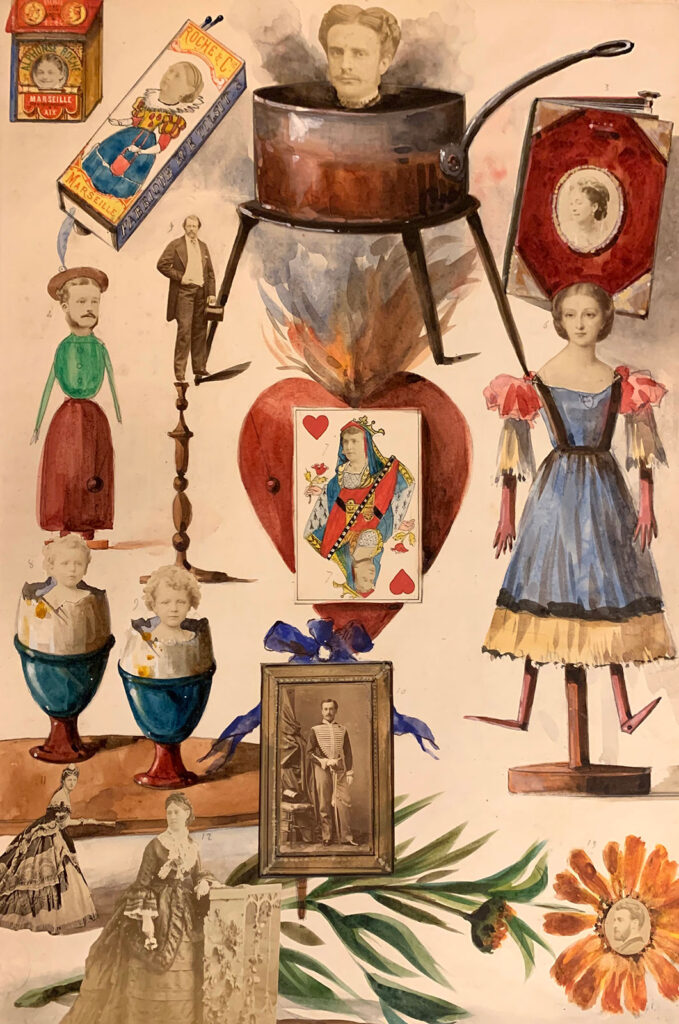Irreverence and Perception: The Blount Album and Victorian Photocollage
Katie Bone
Advisor: Dr. Michael Charlesworth

Abstract
The Blount Album, a British photocollage album from 1867–1875, contains sixty pages created through the act of cutting and pasting commercial photographs into watercolor compositions. The album is just one example of a group of photocollage albums created primarily by aristocratic British women, c. the 1860s–1880s, as a means to show off their accomplishments, creativity, taste, and social circle within the domestic sphere of the Victorian drawing-room. First, the material and social trends that led up to this phenomenon are considered, including European women’s history of scrapbooking and the emergence of the carte-de-visite. The Blount Album is then reconsidered through the lens of its unusual male ownership, while also examining the album’s authorship, socio-historical, and art historical aspects. The similarities and departures between the Blount Album and other examples are also considered through the use of existing secondary literature to illuminate the Blount Album’s history and conception.
While the act of creating this type of album was not subversive in a social sense, as album making was an acceptable pastime for aristocratic Victorian women, this phenomenon presents exceptional examples of photocollage that predate the art historical canon’s traditional attribution of collage beginning with Pablo Picasso and Georges Braque by at least forty years. By reconsidering the formation of the art historical canon’s conception of collage in the 20th century, along with a reexamination of Victorian photography, this phenomenon can be seen as a remarkably complex and irreverent use of the photograph.